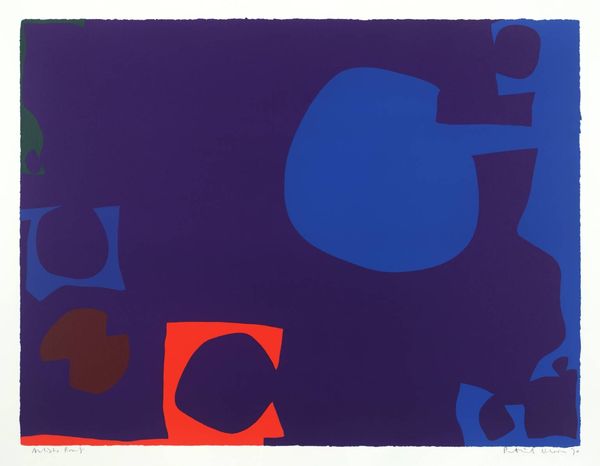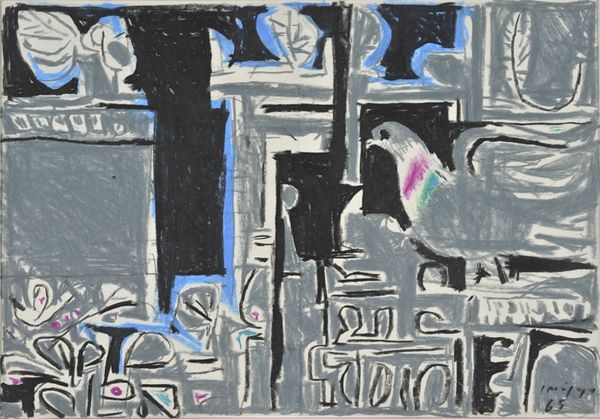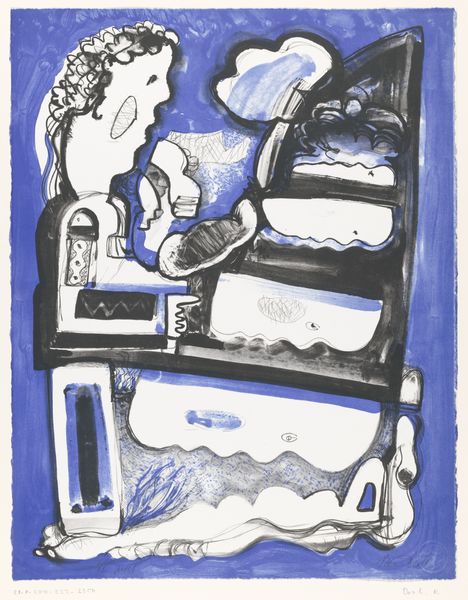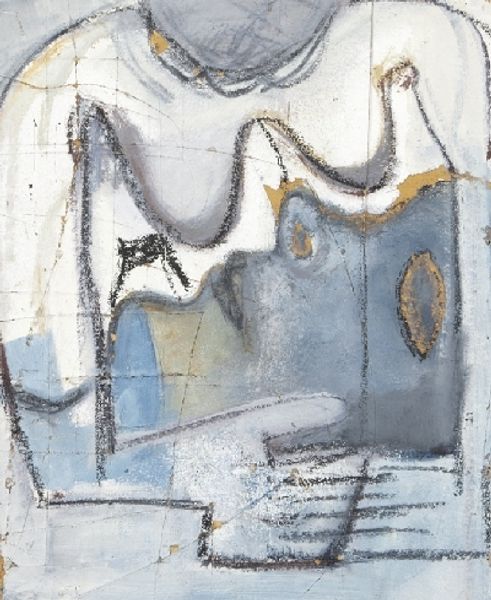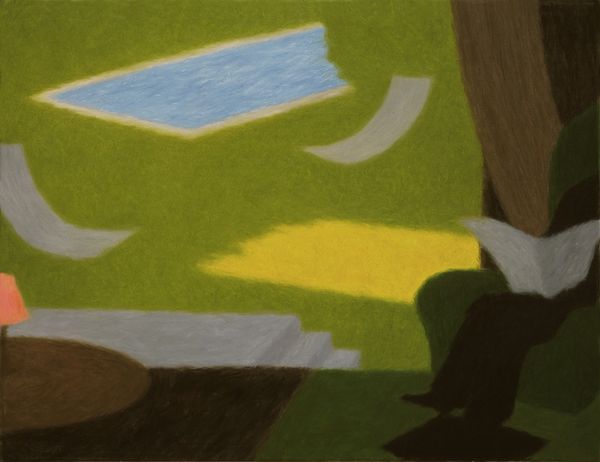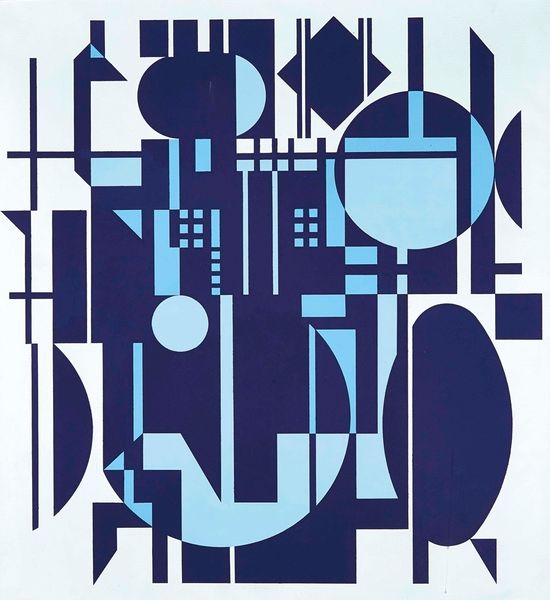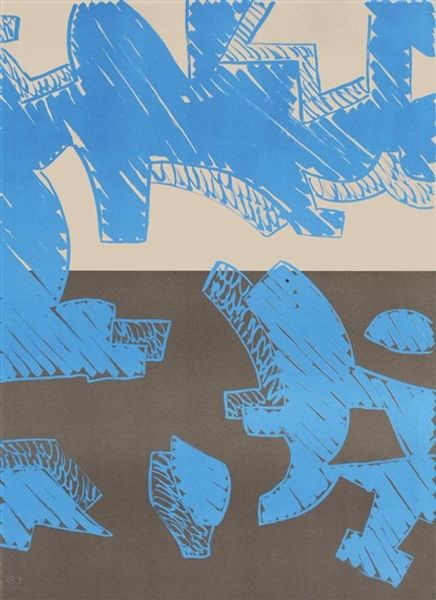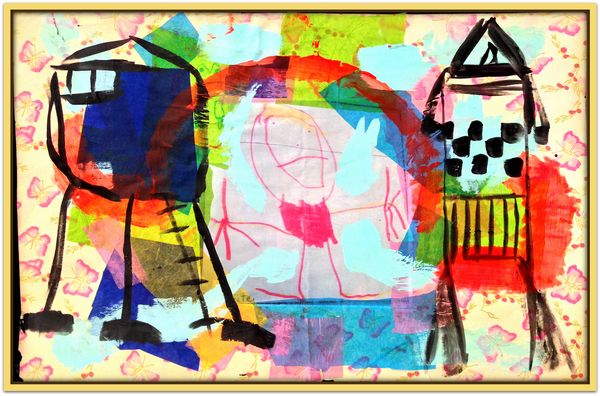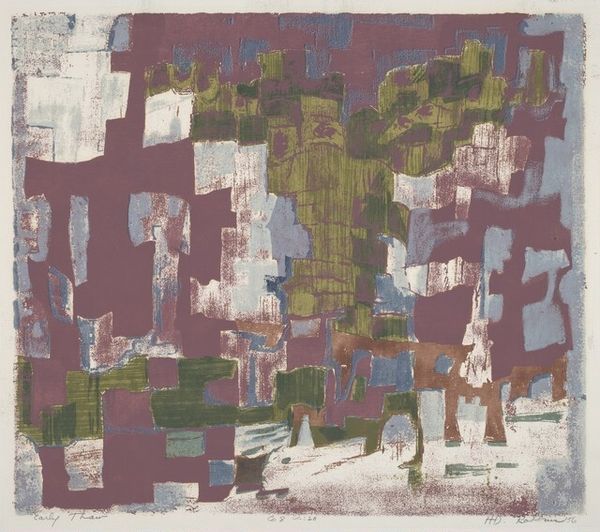
Copyright: Martyl Langsdorf,Fair Use
Curator: Martyl Langsdorf's "Plate Two, from Synapse Suite," created in 1974, is a compelling screenprint that utilizes collage and stencil techniques. Editor: Woah, okay, first impression—it’s giving me major 70s sci-fi vibes, like a blueprint for a chill, lunar getaway pad. All that cool blue, feels like a dream, or maybe the faded memory of a Pong game. Curator: Langsdorf’s work often engages with geometric abstraction, here playing with form and shadow in ways that evoke mid-century architectural diagrams. In light of the artist's activism during the Cold War, do you think her engagement with networks, systems, and linear representations carried any deeper political resonance? Editor: I'm feeling that tension too. It could be about connection, about the invisible links that bind or maybe imprison us. I mean, there's definitely something unsettling in the precision; like everything has its place and the routes are predetermined. Did Langsdorf leave anything to accident, I wonder? Curator: Langsdorf worked very meticulously; her use of stencils speaks to her calculated construction of layers of color. These formal choices carry a weight that can perhaps reflect broader sociopolitical contexts, but not at the expense of the unique visual experience the piece provokes, right? Editor: No way, totally! It's not all doom and gloom! The faded edges, like the airbrushed effect of those hazy blues, saves it from being clinical. There's a softness, a sort of… yearning, maybe? Curator: And while it may at first seem austere, the artwork has real textural complexity when seen in person. It’s worth exploring what printmaking can convey about precision, especially by women artists of that time engaged with both formal innovation and questions about political responsibility. Editor: I like that a lot. It also has the strength of staying open, letting our personal associations—space travel, political machinations—mix with the artist's intent. Beautiful. Curator: It certainly provides ample ground for intersectional readings. Editor: Agreed. It is indeed a window, or… maybe a synapse, into a lot of different worlds.
Comments
No comments
Be the first to comment and join the conversation on the ultimate creative platform.
